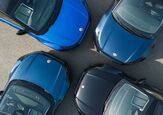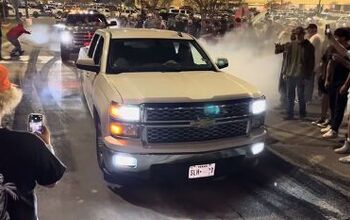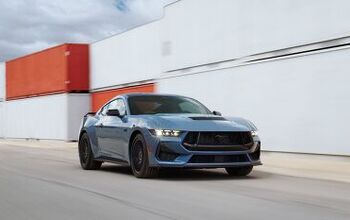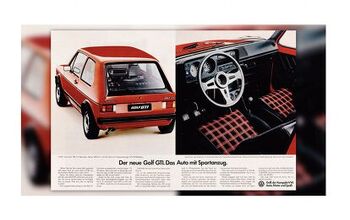When Will Automatic Braking Become Standard Equipment?

There was a time when seat belts were considered unnecessary, reserved as an optional extra for motorists who ventured out onto roadways in a state of white-knuckle fear. What pathetic bags of flesh, many thought, wrapping themselves in a polyester harness because they can’t handle themselves on the road — thinking it will save them from the reckoning of sheet metal and glass.
We know better now. Seat belts are proven life savers and advanced restraint systems are compulsory for both automakers and occupants. That will likely be the path of automatic emergency braking takes as well. Nissan announced Thursday it would make auto braking systems standard on a large portion of 2018 models sold in the United States. Toyota is doing the same. But the technology is not yet ubiquitous, nor has it acquired universal public approval. Many worry it could be too invasive or provide a false sense of invincibility, so it could be a while before AEB becomes expected equipment on all new models.
Autonomous features, even lower-tier elements like emergency braking, require extensive fine turning and additional hardware to operate effectively. That incurs additional cost — something a lot of automakers don’t want to bake into base models. However, regulators and advocates for vehicular safety are urging companies to adopt the technology wholesale.
The Insurance Institute for Highway Safety estimates seventeen percent of recently tested vehicles have a crash avoidance system as standard equipment, typically in a European or Japanese luxury vehicle. Meanwhile, domestic automakers are a little less eager to roll out automatic braking.
Ford “has a plan to standardize over time,” according to a statement on Thursday. Currently, automatic braking systems are reserved as options on a handful of Ford and Lincoln models. It will also be available on the F-Series for the 2018 model year. Fiat Chrysler also offers automatic braking as optional equipment with an eventual plan to standardize it.
General Motors provides collision avoidance systems as optional equipment on about two-thirds of its current lineup but has not announced plans to make it standard. “Any time you have a voluntary agreement you have a spectrum of implementation,” Jeff Boyer, GM’s vice president for safety, told Reuters earlier this week. When pressed on a timeline for standard automatic braking, Boyer said, “let’s just say we honor the voluntary commitment.”
The agreement Boyer is referencing is last year’s accord, where twenty automakers made a pact to include AEB systems as standard equipment by 2022. Of course, there is nothing binding about the agreement and many have petitioned the agency to begin the formal regulatory process to mandate the technology. However, NHTSA believes the voluntary agreement is sufficient and could result in faster deployment of the technology.
It doesn’t seem to care how we get there, so long as we do. NHTSA is a serious proponent of the technology, estimating it could eliminate one-fifth of all traffic collisions. “Do the math. That’s 5 million crashes every year — 20 percent reduction means 1 million less. Those are big numbers,” said former NHTSA administrator Mark Rosekind in an interview last year.
While 2022 sounds reasonable, it would require a serious commitment from automakers to see that happen. But it isn’t entirely out of the realm of possibilities. Continental AG, which supplies Nissan with its auto brake systems, says business is looking up. “We see it accelerating,” said Continental’s head of business development Dean McConnell. “It varies. There are some [companies] that are being aggressive” while the rest are holding back.
[Image: General Motors]

A staunch consumer advocate tracking industry trends and regulation. Before joining TTAC, Matt spent a decade working for marketing and research firms based in NYC. Clients included several of the world’s largest automakers, global tire brands, and aftermarket part suppliers. Dissatisfied with the corporate world and resentful of having to wear suits everyday, he pivoted to writing about cars. Since then, that man has become an ardent supporter of the right-to-repair movement, been interviewed on the auto industry by national radio broadcasts, driven more rental cars than anyone ever should, participated in amateur rallying events, and received the requisite minimum training as sanctioned by the SCCA. Handy with a wrench, Matt grew up surrounded by Detroit auto workers and managed to get a pizza delivery job before he was legally eligible. He later found himself driving box trucks through Manhattan, guaranteeing future sympathy for actual truckers. He continues to conduct research pertaining to the automotive sector as an independent contractor and has since moved back to his native Michigan, closer to where the cars are born. A contrarian, Matt claims to prefer understeer — stating that front and all-wheel drive vehicles cater best to his driving style.
More by Matt Posky
Latest Car Reviews
Read moreLatest Product Reviews
Read moreRecent Comments
- Spectator Wild to me the US sent like $100B overseas for other peoples wars while we clammer over .1% of that money being used to promote EVs in our country.
- Spectator got a pic of that 27 inch screen? That sounds massive!
- MaintenanceCosts "And with ANY car, always budget for maintenance."The question is whether you have to budget a thousand bucks (or euro) a year, or a quarter of your income.
- FreedMike The NASCAR race was a dandy. That finish…
- EBFlex It’s ironic that the typical low IQ big government simps are all over this yet we’re completely silent when oil companies took massive losses during Covid. Funny how that’s fine but profits aren’t. These people have no idea how business works.


































Comments
Join the conversation
These systems are becoming very double edged swords for manufacturers. People don't pay enough attention to their surroundings and then don't realize why the car gives them a warning message or auto brakes. We get calls daily. We also had a customer who admitted that a post was visible in her backup camera, and her parking sensors where beeping, but backed into the post anyway because the car was supposed to stop by itself. The system isn't designed to work at parking lot speeds and doesn't work in reverse.
Carjacking just got easier?